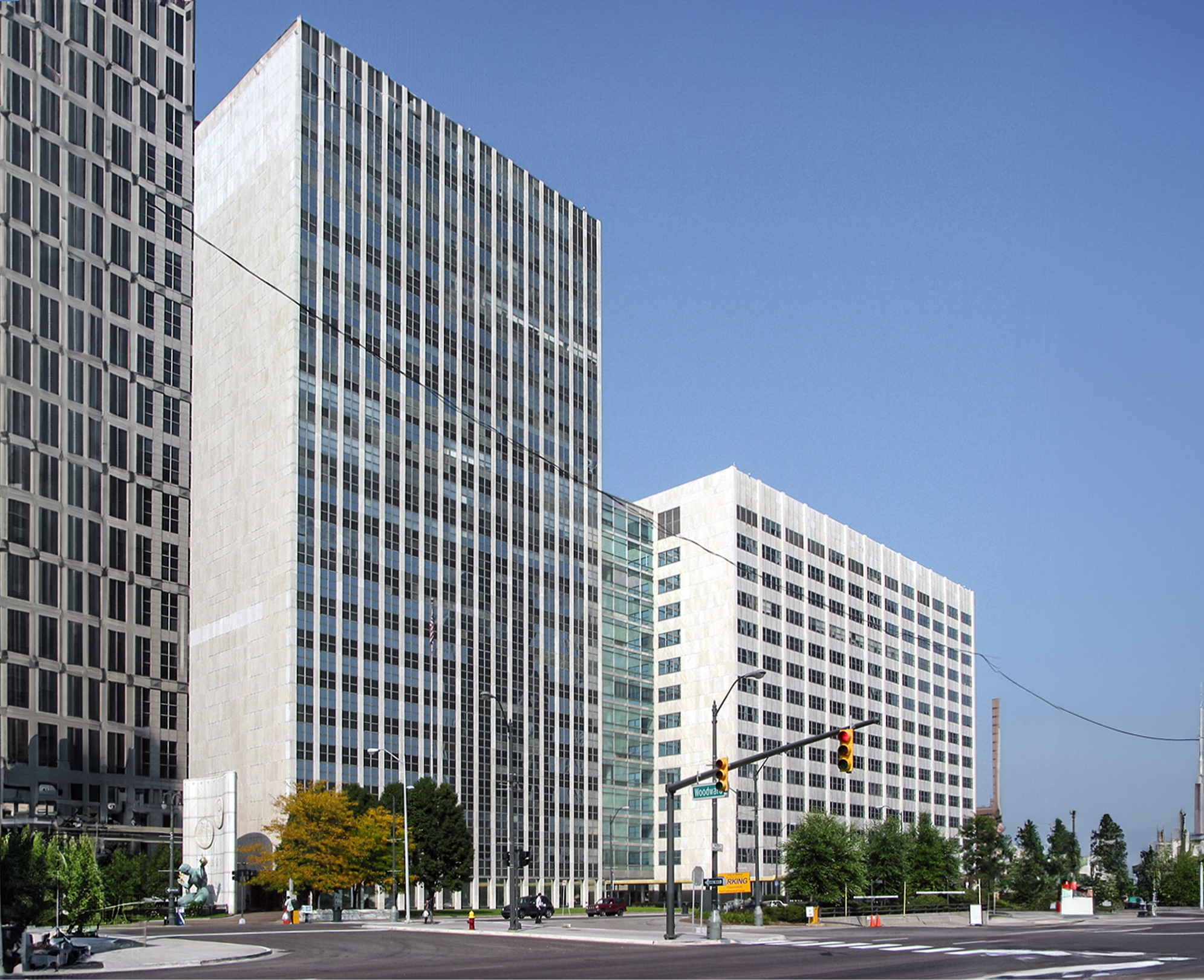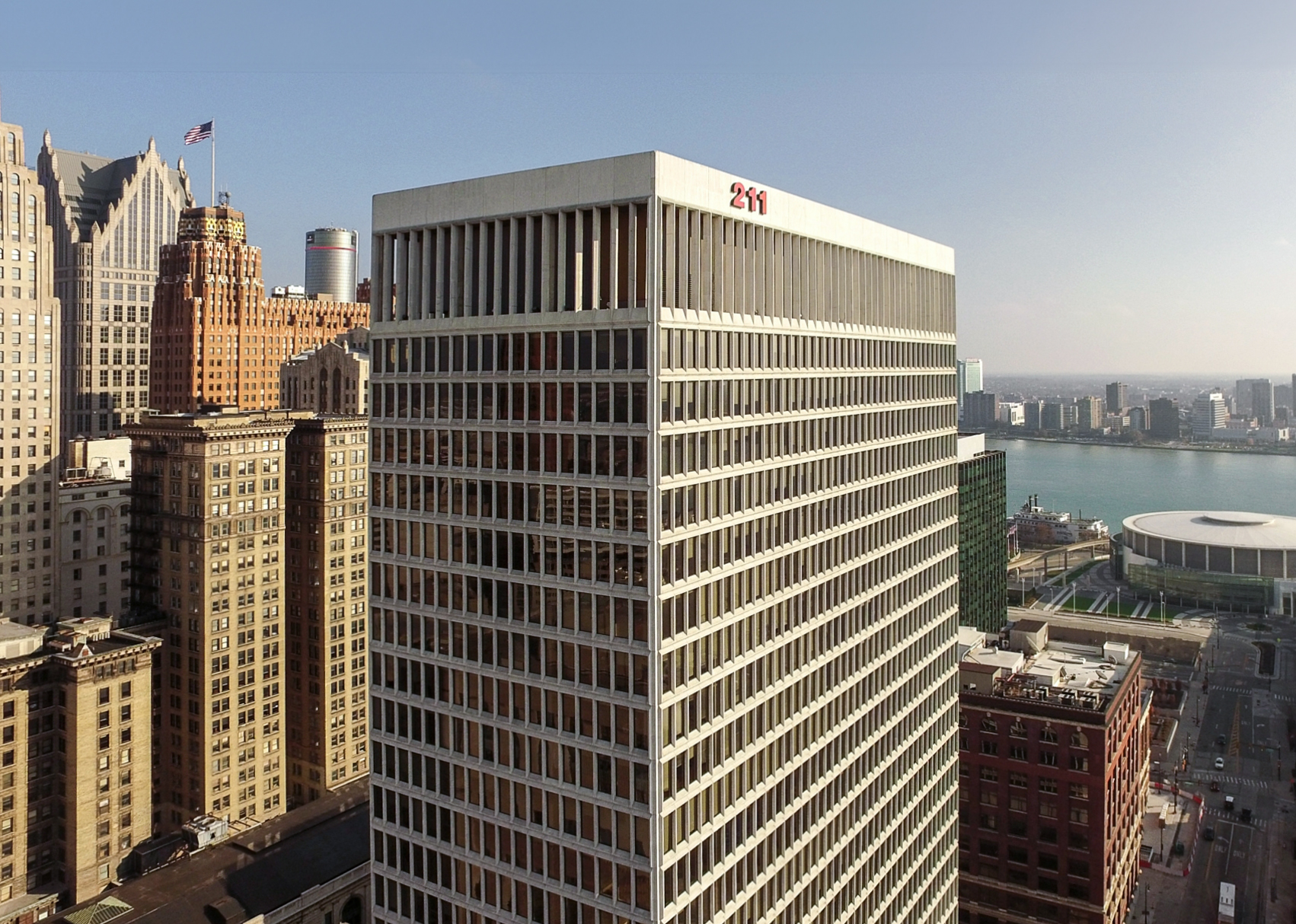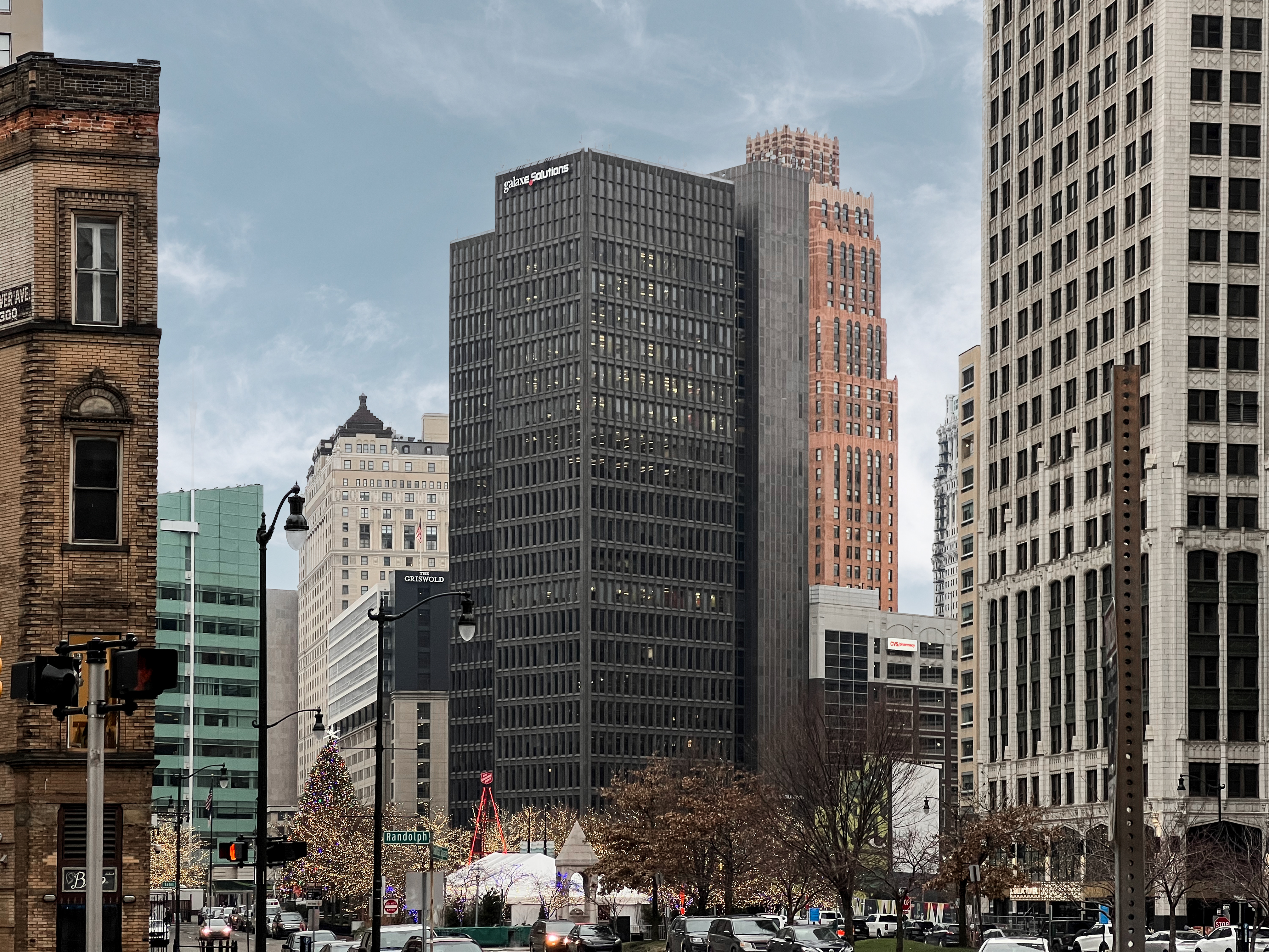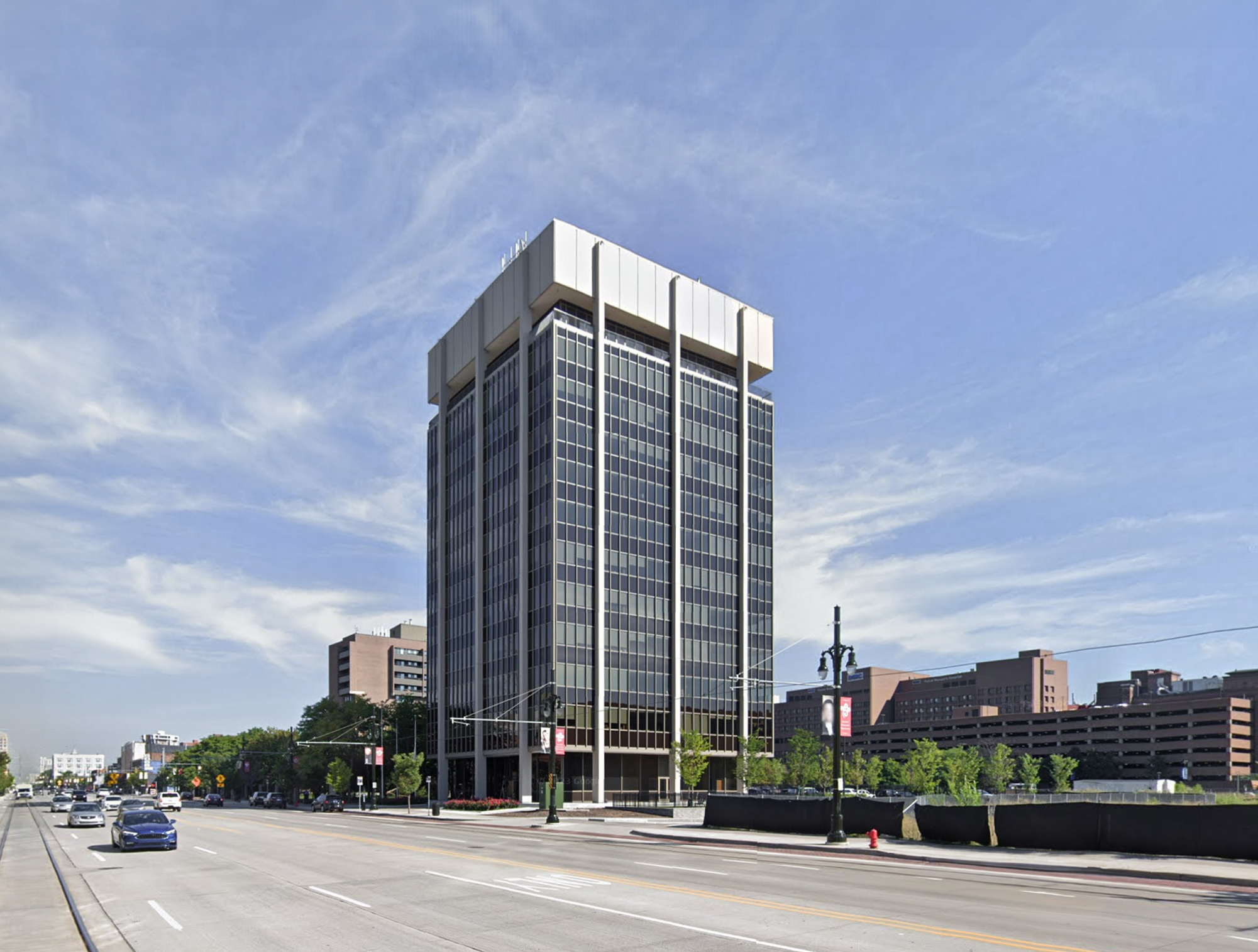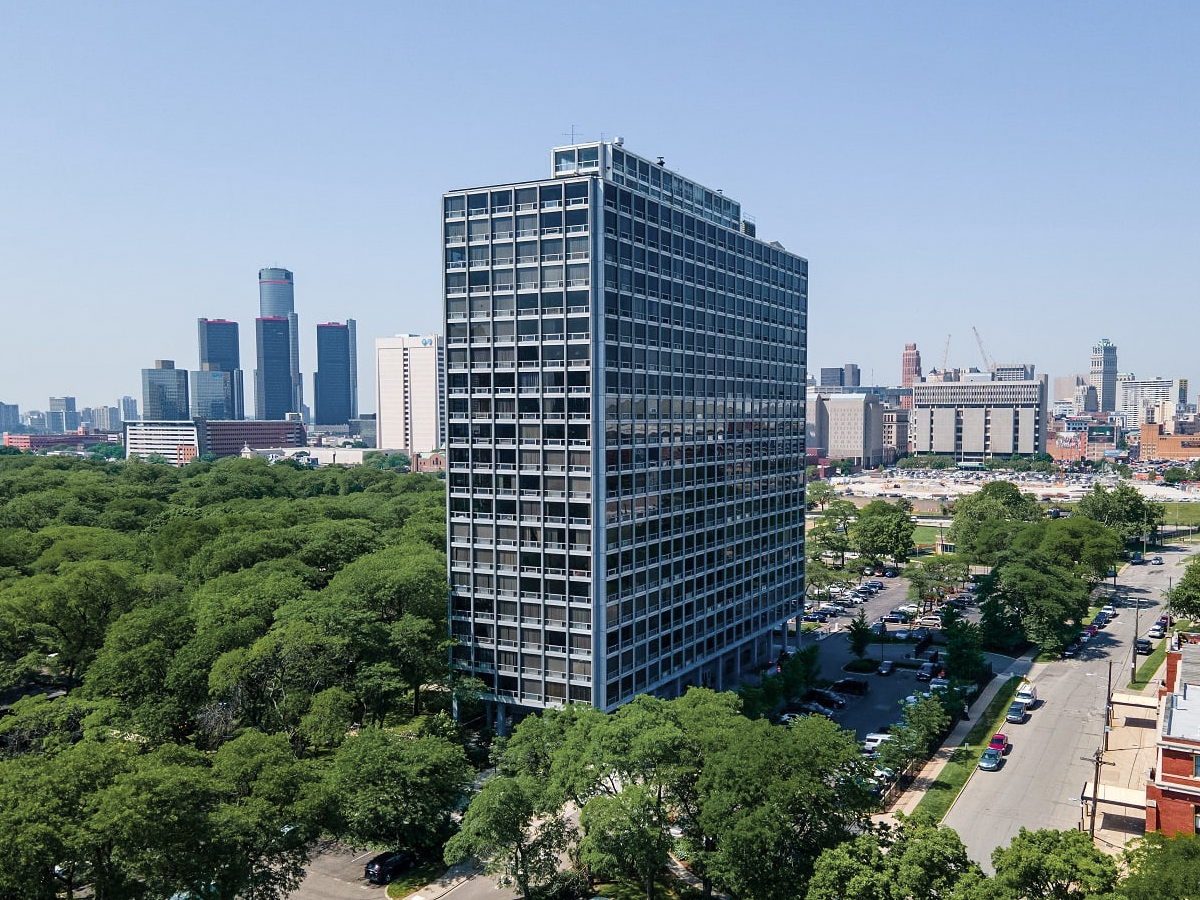The Coleman A. Young Municipal Center is an International Style skyscraper designed in 1947 by Harley, Ellington and Day, and built between 1951 and 1954 in Detroit, MI.
Coleman A. Young Municipal Center is not the only name you might know this building by though. The building is, or has also been known as City-County Building.
Its precise street address is 2 Woodward Avenue, Detroit, MI. You can also find it on the map here.
The Coleman Center consists of two towers:
- One, 19 floors and 97m high, housing the court.s
- The other, 14 floors and 60m high, occupied by the executive and legislative offices of the city of Detroit
Even though both towers can be perceived as separate entities, they are connected to one another on every single floor they share, effectively turning them into one single building.
The building has been restored 2 times over the years to ensure its conservation and adaptation to the pass of time. The main restoration works happened in 1985 and 2013.
